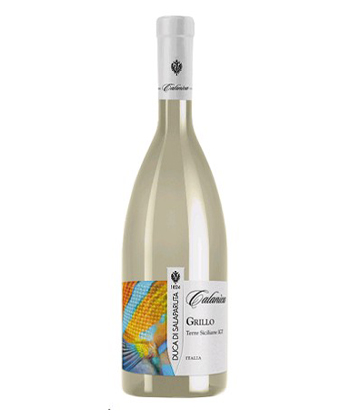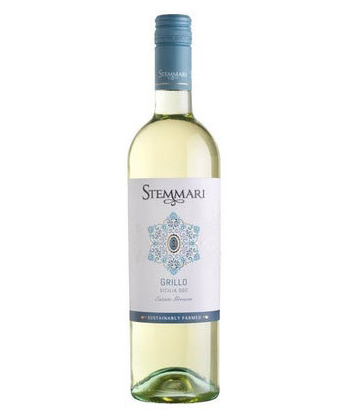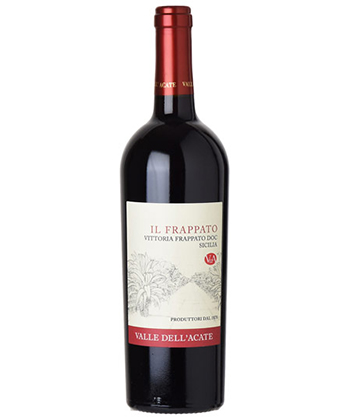One is immediately struck by the sense of history when visiting Sicily, the southern Italian island that feels less like an “island” and more like its own continent.
Given Sicily’s strategic location, the island was one of the most sought-after prizes in the Mediterranean, with a long history marked by Greek, Roman, Phoenician, Carthaginian, Arab, Byzantine, Norman, French, and Spanish interests. Evidence of these varying historic influences can be seen in everything from churches and architecture to culture, cuisine, and the many ruins found on the island.
It’s no wonder Sicilian wine long struggled with an identity crisis.
For years, the Sicilian wine industry was based largely on the production of Marsala and bulk wine. However, in recent years, Sicily has started to emerge as a wine region to watch, in large part thanks to the establishment of the Sicilia DOC.
Recognized in 2011 by the Ministry of Agricultural, Food, and Forestry Policies and officially established in 2012 with the aim of protecting and promoting the production of Sicilian wine, the Consorzio di Tutela Vini DOC Sicilia represents about 3,000 growers and nearly 500 winery members. This large appellation covers many of Sicily’s indigenous grape varieties, including Grillo, Catarratto, Inzolia, Nero d’Avola, Frappato, and Perricone, although certain international grapes like Syrah and Chardonnay are also allowed.
A New Generation of Sicilian Wine
There’s a palpable frenetic energy between Sicilian winemakers. It’s the excitement that comes with the conviction that they’re on the verge of something momentous, that they’re about to crack the code to global mainstream wine recognition. With no other winemaker is this more evident than the larger-than-life co-owner of Cusumano Winery, Diego Cusumano, who is a dynamic ambassador for the region. He’s got big hair, a big personality, and an absolutely huge passion for Sicily and its wines.

Cusumano believes Sicily is the best place to make wine, as it naturally possesses everything a winemaker could want to work with: ideal weather, plenty of sunlight, and diverse soil types suitable for growing grapes. Cusumano is also passionate about taking advantage of the many meso-climates throughout Sicily, seeking out the unique expressions of terroir possible with grapes like Grillo and Nero d’Avola, depending on where they are grown. Their vineyards at Tenuta Monte Pietroso, for example, are located 400 meters above sea level, with sandy soils and winds from the north that bring cooling sea air to allow them to grow and produce Grillo with prominent acidity and minerality; whereas their vineyards at Tenuta San Giacomo in Butera are bright and sunny, with snow-white calcareous soil rich in “trubi,” a local calcareous-clay rock that allows their Nero d’Avola to reach full ripeness, while maintaining freshness thanks to altitude and proximity to the sea.
But the movement toward quality isn’t just a matter of winemakers realizing the gold they are sitting on thanks to an ideal climate. It has come about thanks to a growing cohort of fresh, forward-thinking winemakers and winery owners who are seeing the immense potential of Sicilian wines to compete on the world stage. Many insist that the island is poised to have a “moment” of its own — a moment long enjoyed, many times over, by Italy’s better-known regions like Tuscany and Piedmont.
What’s Old Is New Again
At the heart of this movement is the revival of native Sicilian grapes, in particular Sicilia DOC’s hallmark varieties, Grillo, Cattaratto, and Nero d’Avola, which its pioneers plan to accomplish for the next generation in the winery. Timing is always essential for meaningful change, and certain market forces that make these now-offbeat wines more exciting to the modern, often younger consumer appear to finally be in play.
“Grillo was completely unknown 10 years ago,” Andrea Pizzo, who handles external relations for Gruppo Mezzacorona, says. “We started exporting it almost 15 years ago, and had a very difficult time. So we said… ‘stop.’ Fortunately, then the Consorzio arrived.”
There’s also an exciting sparkling wine trend on the horizon, with many producers experimenting with base wine grapes, dosage levels, and production techniques. Pricipi di Butera, for example, is producing a traditional-method sparkling Pas Dosé Nero d’Avola that is a stunning example of what is possible when this native grape is picked earlier in the season for sparkling wine.
“In recent years, we have seen a great return to native grape varieties,” says 37-year-old winemaker Francesco Di Giovanni, who produces organic wine for Summanera. “A great deal of work is also being done in the cellar with these varieties, experimenting and making a myriad of trials, bringing very interesting wines to the market.”
Cultivating Sustainability
There is a notable awareness of the pressures of climate change among Sicilian winemakers, as well as a movement toward organic farming and sustainability. The region is well positioned for these practices: The climate here is Mediterranean, with relatively low rainfall and breezy, arid conditions that suit it to organic farming thanks to lower threat of disease in the vineyard.

Producers like Funaro, founded in 2003 by three siblings — Tiziana, Clemente, and Giacomo — see organic and sustainable practices as the cornerstone of their business, and have even created and published a “Respect Rulebook” that outlines the steps they take to call themselves an “Eco-Friendly Company.”
Cusumano’s father, Francesco, issued a prescient warning when the family winery started out in 2001: Climate change will be a problem. As such, the family has consistently prioritized high altitude — its moderating effects will help mitigate rising seasonal temperatures — when planting the various vineyards they own throughout the region. The result? Wines with immense body, yet surprising acidity and elegance for a region characterized by warmer weather.
Above all else, nearly every producer speaks of the importance of sustainability, not only agriculturally, but socially as well.
“Here, we have to understand the social level of welfare,” Giacomo Tarquini, global marketing director for the Duca di Salaparuta Group, says. “It’s one of the most important things to bring to the wineries in order to have a healthy team, a healthy level of knowledge, and to have people who don’t want to leave the island to go elsewhere.”
In Defense of… Tesla?
Tarquini also believes in encouraging younger generations to make use of the full suite of technological advances of modern winemaking, though he realizes this is tough for the older generation of winemakers to get behind.
“In Italy, we have a saying: ‘Ci vuole molto tempo per essere giovani’ — it takes a lot of time to be young,” Tarquini says. “If I asked my father, ‘Do you want a Mustang or a Tesla?’ he would say ‘[Expletive] you, Tesla. Tesla is electric. I want to feel the engine of the car.’ But the future is with Tesla. And in a few years, maybe he will better understand this.”
And yet in his modern approach to producing great wines from classic Sicilian grapes, Tarquini has had to come to this realization as well.
Looking Ahead
“In my opinion, the great wines of Sicily can compete on an international level with the best wines of Tuscany and Piedmont,” says the charismatic Klaus Di Giovanna, who runs the fifth-generation Di Giovanna winery with his equally magnetic brother, Gunther.
Di Giovanna also believes Tuscany and Piedmont have already had their moment, and, as a result, have maybe even rested on their laurels a little bit. “Noi abbiamo fame,” he says. “We, on the other hand, are hungry.”
But he’s careful to point out that this hunger is not for money. Instead, his family is striving for Sicily and the Di Giovanna name to be broadly associated with quality wine, and to cement this reputation for future generations — including his own two daughters, whom he hopes will one day want, and be able to, work at the winery.
Whether they will opt for a Mustang or a Tesla is another story yet to be told.
10 Wines from the Sicilia DOC to Try Right Now:
Sparkling:
Feudo Principi di Butera NV Sparkling Nero d’Avola
White:

Di Giovanna Vurría Grillo

Duca di Salaparuta Grillo Calanica

Funaro Pinzeri Grillo

Stemmari Grillo

Tenuta Orestiadi Cataratto
Red:

Valle dell’Acate ‘Il Frappato’

Corvo Colomba Platino Nero d’Avola

Summanera Syrah

Cusumano Nero d’Avola
This story is a part of VP Pro, our free platform and newsletter for drinks industry professionals, covering wine, beer, liquor, and beyond. Sign up for VP Pro now!

